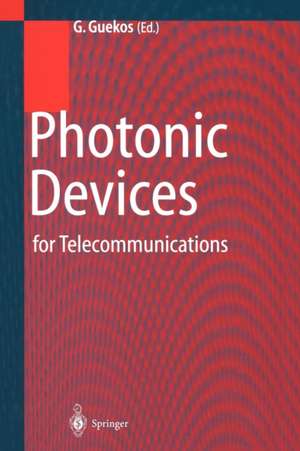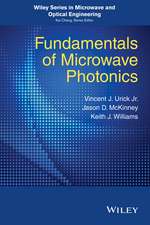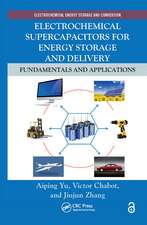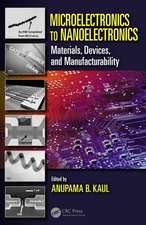Photonic Devices for Telecommunications: How to Model and Measure
Editat de George Guekosen Limba Engleză Paperback – 21 ian 2012
Preț: 647.40 lei
Preț vechi: 761.65 lei
-15% Nou
Puncte Express: 971
Preț estimativ în valută:
123.88€ • 129.69$ • 102.50£
123.88€ • 129.69$ • 102.50£
Carte tipărită la comandă
Livrare economică 05-19 aprilie
Preluare comenzi: 021 569.72.76
Specificații
ISBN-13: 9783642641688
ISBN-10: 3642641687
Pagini: 440
Ilustrații: XXXIII, 404 p.
Dimensiuni: 155 x 235 x 23 mm
Greutate: 0.61 kg
Ediția:Softcover reprint of the original 1st ed. 1999
Editura: Springer Berlin, Heidelberg
Colecția Springer
Locul publicării:Berlin, Heidelberg, Germany
ISBN-10: 3642641687
Pagini: 440
Ilustrații: XXXIII, 404 p.
Dimensiuni: 155 x 235 x 23 mm
Greutate: 0.61 kg
Ediția:Softcover reprint of the original 1st ed. 1999
Editura: Springer Berlin, Heidelberg
Colecția Springer
Locul publicării:Berlin, Heidelberg, Germany
Public țintă
ResearchCuprins
I Photonic Waveguide Structures.- 1 Mode solvers and related methods.- 2 Beam propagation methods.- 3 Benchmark tests and modelling tasks.- 4 Methods for waveguide characterization.- 5 Comparison of experimental results.- II Semiconductor Distributed Feedback Laser Diodes.- 6 Introductory physics.- 7 Modelling of DFB laser diodes.- 8 Measurements on DFB lasers.- 9 Parameter extraction.- III Nonlinear Effects in Semiconductor Optical Amplifiers: Four-Wave Mixing.- 10 Why and how to study four-wave mixing?.- 11 Theory of four-wave mixing.- 12 Measurement techniques and results.- 13 Related topics.- Appendix. An optical data interchange format.- Symbols.
Textul de pe ultima copertă
This book focuses on the basic topics of modelling and measurement of photonic devices and discusses the most modern tools for simulation and experimentaion available to engi- neers and physicists. - Presents and compares powerful methods for numerical modelling of photonic waveguide structures and for waveguide characterisation. - Explains extensively how to model distributed feedback (DFB) lasers, the key optical source for advanced communications systems, and how to experimentally determine accurately their main characteristics. - Investigates the potential of non-linear properties of semiconductor optical amplifiers (SOAs) for fibre communications through detailed theoretical and experimental examination of the four wave mixing (FWM) effect. - Provides extensive referencing covering the latest reresearch results.
Caracteristici
Telecommunications by light is the hot topic of this final report of the European COST#240-Project. A lot of renowned Research Institutes are involved.












